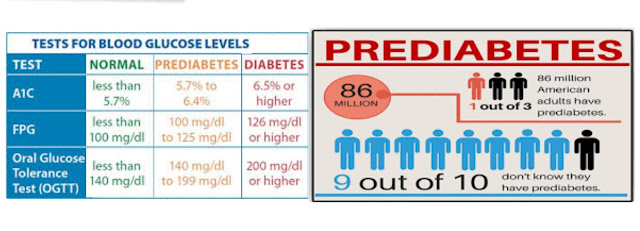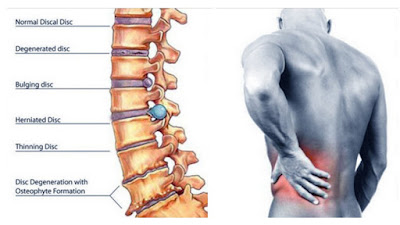CHRONIC LOW BACK PAIN: The Lower Back Structures and Treatment Approach
If you have low back pain, you're not alone. Most people in their lifetime experience one or more episodes of low back pain. In most cases the pain goes away within days to weeks however it can last for three months or more. These extended episodes are defined as chronic low back pain.
The common treatment approaches for low back pain include exercises relaxation techniques and medications to understand how these treatments work. Let's first look at the structure of your lower back. The spinal column is made up of vertebrae back problems and back pain commonly occur in the lumbar region.
Each vertebra has an opening that forms the spinal canal and protects the spinal. Nerves facet joints and intervertebral discs connect the vertebrae above and below these structures are held together by groups of ligaments and muscles muscles attached to the spinal column allow us to move and they also support the spine bearing the body's weight.
If some of these muscles are tight weak or imbalanced pressure can result in excessive wear and tear of other structures. For example a common problem in the lower back is disc herniation. In this case pressure on an intervertebral disc has caused its center the nucleus pulposus to protrude backwards and push against the spinal nerves, resulting in low back pain for some patients.
The pain can also be felt in nearby areas where the spinal nerves from the lower back also extend such as the leg and foot. On the affected side exercise can relax muscles and reduce pressure in the lower back structures. It is important to consult your health team to determine which exercises are best for your condition, consider one common low back pain exercise program called the McKenzie method for patients, with posterior disc herniation lying in a prone position, reduces the pressure on the discs. If the pain condition allows performing extension movements can gently stretch and relax tight muscles your lower spine, also becomes more arched with time bringing the disc center forward into the correct position and reducing the irritation on your nerves, therefore decreasing the pain in your lower back and legs.
The benefit of exercising is more than just reducing the pressure on your lower back structures by integrating back exercise into your daily routine. You can condition your abdominal and back muscles referred to as core muscles and therefore prevent low back pain from happening again.
For some patients relaxation techniques such as meditating in a relaxed position as well as cognitive behavioral therapy, can ease back pain. This is because our brain not only perceives pain but also regulates pain signals, when back structures are damaged pain signals ascend from the lower back through the spinal cord arrive in the brain region that perceives pain the sensory cortex. However, this is not a direct route at least two connections have to be made. It's at these relay stations which include the spinal cord and the thalamus that pain signals can be regulated by the brain.
Let's take a closer look at the first relay station located in the dorsal Horn of the lumbar spinal cord. Here the incoming pain signals are passed from a sensory neuron in the lower back to a relay neuron in the spinal cord. The pain signals then ascends up to the brain. This pain impulse can be reduced by a specific type of neuron carrying signals back from the brain, as a result fewer pain signals are sent to the brain.
So we feel less pain however if for instance you are stressed these brain signals can increase the pain signals therefore studies show that patients with depression or anxiety experienced more pain while patients who have positive attitudes and are engaged in their treatment feel less pain. Your health professional may also suggest that you take pain relieving medications that fit with your existing medication regimen. The effects vary greatly depending on what type of medication is prescribed some medications help relax muscles and some act on the neurons in the relay stations to reduce the pain signals.
It is important to follow the advice of your health team and do exercises learn relaxation techniques and perhaps take medications. The benefits might not be felt right away it takes time and your active participation. By taking an active and informed role in your own health you are guaranteed to better control your pain and lead a healthier of your life.
The common treatment approaches for low back pain include exercises relaxation techniques and medications to understand how these treatments work. Let's first look at the structure of your lower back. The spinal column is made up of vertebrae back problems and back pain commonly occur in the lumbar region.
Each vertebra has an opening that forms the spinal canal and protects the spinal. Nerves facet joints and intervertebral discs connect the vertebrae above and below these structures are held together by groups of ligaments and muscles muscles attached to the spinal column allow us to move and they also support the spine bearing the body's weight.
If some of these muscles are tight weak or imbalanced pressure can result in excessive wear and tear of other structures. For example a common problem in the lower back is disc herniation. In this case pressure on an intervertebral disc has caused its center the nucleus pulposus to protrude backwards and push against the spinal nerves, resulting in low back pain for some patients.
The benefit of exercising is more than just reducing the pressure on your lower back structures by integrating back exercise into your daily routine. You can condition your abdominal and back muscles referred to as core muscles and therefore prevent low back pain from happening again.
For some patients relaxation techniques such as meditating in a relaxed position as well as cognitive behavioral therapy, can ease back pain. This is because our brain not only perceives pain but also regulates pain signals, when back structures are damaged pain signals ascend from the lower back through the spinal cord arrive in the brain region that perceives pain the sensory cortex. However, this is not a direct route at least two connections have to be made. It's at these relay stations which include the spinal cord and the thalamus that pain signals can be regulated by the brain.
Let's take a closer look at the first relay station located in the dorsal Horn of the lumbar spinal cord. Here the incoming pain signals are passed from a sensory neuron in the lower back to a relay neuron in the spinal cord. The pain signals then ascends up to the brain. This pain impulse can be reduced by a specific type of neuron carrying signals back from the brain, as a result fewer pain signals are sent to the brain.
So we feel less pain however if for instance you are stressed these brain signals can increase the pain signals therefore studies show that patients with depression or anxiety experienced more pain while patients who have positive attitudes and are engaged in their treatment feel less pain. Your health professional may also suggest that you take pain relieving medications that fit with your existing medication regimen. The effects vary greatly depending on what type of medication is prescribed some medications help relax muscles and some act on the neurons in the relay stations to reduce the pain signals.
It is important to follow the advice of your health team and do exercises learn relaxation techniques and perhaps take medications. The benefits might not be felt right away it takes time and your active participation. By taking an active and informed role in your own health you are guaranteed to better control your pain and lead a healthier of your life.











Comments
Post a Comment